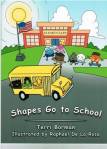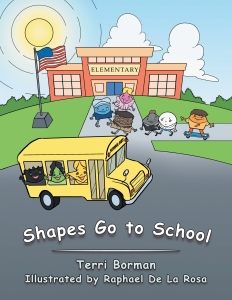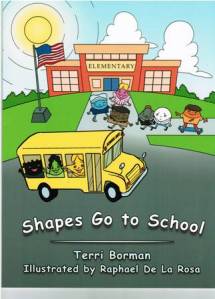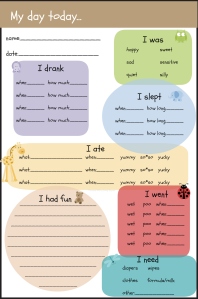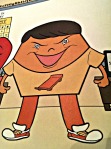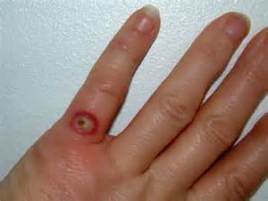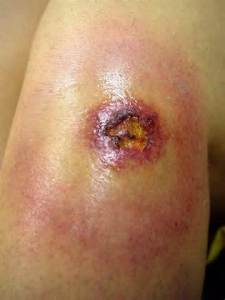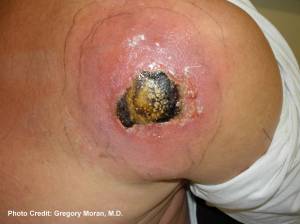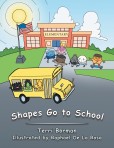In home childcare has many benefits. The class size is smaller, there’s no staff turnover because the provider is the staff, the children have the comfort of feeling at home, and in home childcare is regulated by the state they live in.
Unfortunately, there are people out there running illegal in home childcare operations, and you should do your due diligence and look up prospective childcare providers on your state’s website. In Texas, the agency that regulates childcare is called the Texas Department of Family and Protective Services or DFPS. The DFPS website will show the childcare, how long they have been in business, and how they have been doing since they started the childcare. If a childcare is not listed on the state’s website, then they are not operating legally.
Most in home childcare businesses will have operation policies available for you to review and most of the questions listed below will be addressed in their policies, but it doesn’t hurt to ask them during an interview.
1. Are you registered, or licensed with the state?
In the State of Texas, it is against the law to operate an in home childcare without being regulated by the Texas Department of Family and Protective Services. Therefore, all in home Texas childcare must be registered, or licensed. All registered and licensed childcare homes are required to do background checks on anyone routinely around the children who are 14 years of age and above. The reason for this is for the protection of the children. We do not want sex offenders and people with felony convictions that can’t find jobs opening up in home childcare or working around children. In addition, regulated childcare providers are required to receive annual training and follow the Minimum Standards For Childcare Homes.
2. How many children are in your care, and how many are infants?
In the Minimum Standards, there are child/caregiver ratios, and you should print these ratios out before the interview. There are different ratios for Registered, Licensed, and Licensed with helpers and the number of infants changes the child/caregiver ratio.
3. Do you have any helpers?
Having a helper means that there are always eyes on the children in care. When the provider needs to go to the bathroom, the helper is there. When it’s time to make lunch, the helper is there. Does this mean the provider can leave the helper alone with the children to run errands? No! The provider may never leave the helper alone. Hiring a helper is not mandatory for an in home childcare unless they are licensed and want to care for more children. Having a helper is a plus though when interviewing.
4. What are your hours?
In home childcare can set their own hours so make sure the hours work for your schedule.
5. What is your policy regarding sickness?
You should ask how they handle children who get sick during care. Do they send children home with any sort of cough and sniffle? Or are they the opposite and let sick children remain exposing otherwise healthy kids? You should also find out what happens when the provider becomes ill or has an appointment.
6. Do I pay for vacation or absent days?
If your child is sick or out on vacation, your weekly tuition will most likely still be due and should be paid on time or ahead of time if you will be away. You should ask what their policy is when they are closed. Some providers won’t charge tuition when they are going to be closed for vacation and, therefore, you can schedule your vacation at the same time.
7. What is your discipline policy?
You want to find out what the provider does for discipline and that it is age appropriate. They may not discipline at all and that could lead to behavior problems for you down the road.
8. Are meals and snacks are provided?
How many meals and snacks are provided? What are the meal times? What is the policy if the child is dropped off after a meal time, but has not yet eaten? Parents should understand that childcare providers cannot tailor meals to an individual child and cannot have an open kitchen like I-HOP. Any food allergies should be stated in writing and any specialty foods should be provided by the parent.
9. Do you charge extra if I am late picking up my child?
Most childcare providers charge $1 for every minute a parent is late picking a child up after hours. Typically, providers are understanding and may offer parents a couple of allowances due to mitigating circumstances. However, 30 minutes late on several occasions is never acceptable. Your lateness prevents providers from taking care of their own families and getting to their planned activities.
10. What is your overall childcare beliefs?
Do you believe in nurturing and providing quality care or do you have an educational component too? What training do you have? Do all children participate in everything? What if the younger ones are unable to participate or lack the interest? Does the provider offer stations of choice? Is there structure and a schedule that is followed each day?
11. What are your policies regarding safety?
Parents should look around inside and outside. Is there cleanliness and overall safe looking conditions? Is it well-lit and a comfortable temperature? Where do the children sleep? What do they sleep on? Where are the sleep stuff kept? Can one child’s blanket touch another? Are cribs shared? Are toys sanitized on a regular basis? What happens if one child puts a toy in his/her mouth and puts it down? Is the outdoor play equipment weathered, out dated, and dilapidated? Is there a pool? Is there a well maintained fence? Are there outside animals? Is the animal debris cleaned up?
12. Can I visit my child?
Most providers have an open door policy and would welcome you into their home at any time. Also, your help during special activities, such as Christmas and Valentines parties, would be greatly appreciated.
Hi this is Terri Borman childcare specialist and author of Shapes Go to School. While having fun reading my book, children will learn to recognize shapes and everything in between such as colors, counting, and even diversity. To order your copy, click on the picture of Shapes Go to School.
